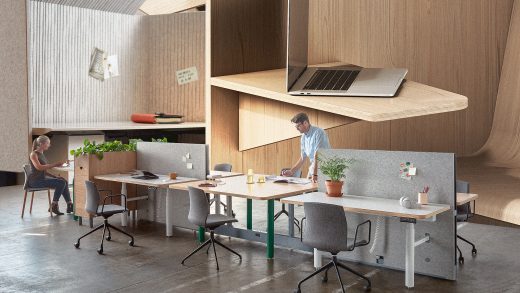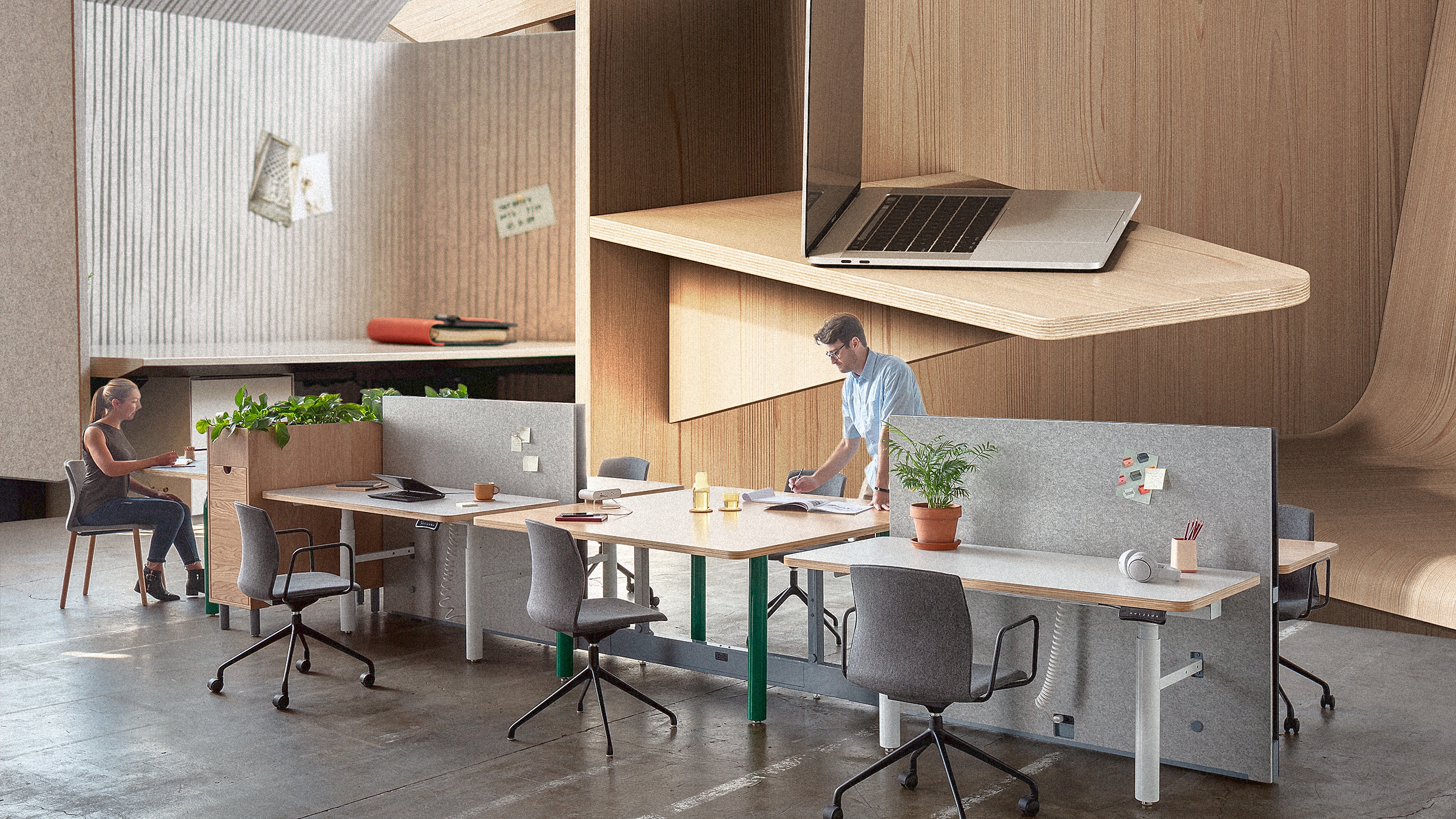Workers are learning to love the cubicle
It took more than 50 years, but the cubicle may finally be having its moment.
Designers invented the now-commonplace workstation in the late 1960s as a way to combat the noise and lack of privacy in open-plan offices lined with rows of desks. The semi-walled cubicle was an idealistic solution to an inherently human problem: people want privacy when they work, but not so much privacy that they shut out the world. They want to be able to focus, but not at the expense of connection.
The concept was great, in theory. The execution, however, left many workers feeling isolated in a sea of monotonous cubes. But in the post-pandemic era—when employees are returning to offices that are half-filled and buzzing with video-call noise—the prospect of even a half-private space is increasingly attractive.
Companies, office designers, and furniture manufacturers are all recognizing that the ideas behind the cubicle make a lot of sense in today’s hybrid work world. New types of cubicles are now making their way into offices, with designers reconsidering and reinventing the form to account for unprecedented conditions of how and where people work today. The pandemic has forced a reconsideration of the workstation. Can the cubicles of 2023 finally achieve what the original cubicle intended?
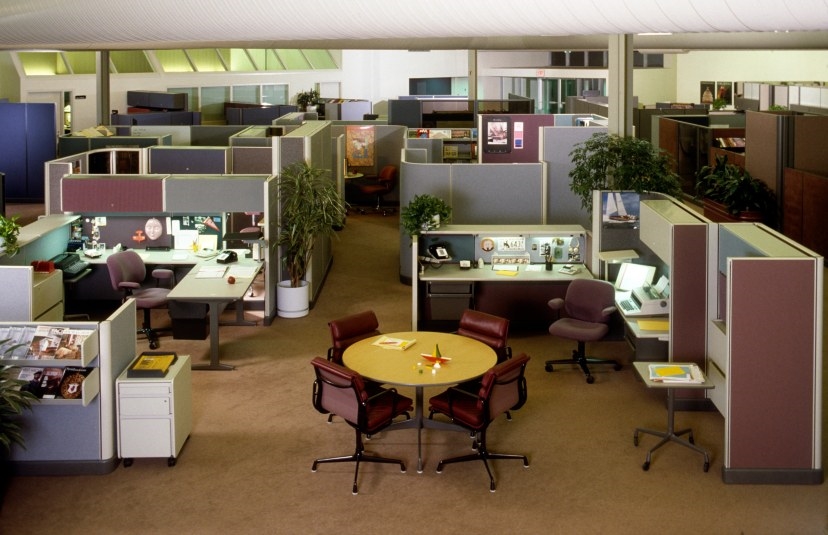
The cubicle is born
“We find ourselves now with office forms created for a way of life substantially dead and gone,” wrote the late Robert Propst, president in the 1960s of Herman Miller Research Corp., considered the inventor of the office cubicle. With office buildings limping to half occupancy post-pandemic and many office workers embracing a hybrid work style that lets them almost avoid the office completely, this observation could have been made (August 24, 2023). In reality, it was written in Propst’s 1968 book, The Office: A Facility Based on Change, which bemoaned how office environments were unable to keep up with changing technologies, industries, and work patterns.
As Herman Miller’s research director, Propst’s recommended solution to this lag was a redesign of a concept he and the company’s design director George Nelson had created in 1964 called the Action Office. Consisting of an interchangeable set of stand-alone desks, shelving units, and cubby-like stations, the Action Office inserted a more customizable seating system into offices that were often open floors with rows of identical desks.
Action Office 2, as the redesign was called, added walls to these elements, allowing them to be combined and configured into discrete and private workstations in a variety of ways. “It permits a significant degree of adjustment and selection by the user himself,” Propst wrote of the system back in 1968. “He can shake down his facility until it works, and he can change it as his work restructures.”
This workstation solution would come to be known as the cubicle. For the past 55 years, it has dominated office design, with open office space being subdivided by various iterations of the still-available Action Office (and countless reinterpretations, knockoffs, and bastardizations).
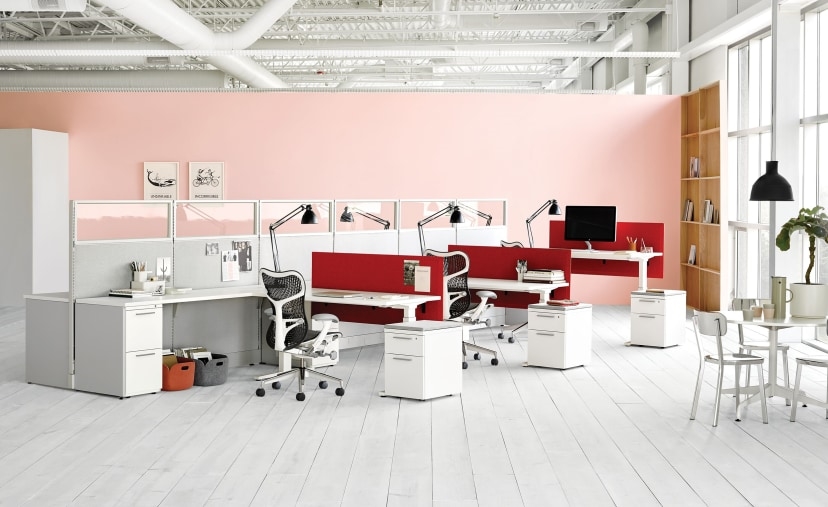
But as the name suggests, the cubicle has fallen short of Propst’s ambitions for the system. Instead of being a flexible, changeable set of furniture that adapts nimbly to changing times, most versions of these systems ended up taking the form of repetitive three-walled cubes, to the chagrin and ennui of office workers the world around. The dynamic workplace Propst envisioned in 1968 ended up a life-draining monotony.
Fast forward to the 2020s, this design approach is even more detached from the ways people want and need to work. After several years of working remotely during the pandemic, workers are understandably picky about when they will come back to the office, and companies understand that providing appealing workplaces is part of the way they can attract and retain talent. And a large roomful of 1960s-era cubicles is not cutting it.
The cubicle redefined
The pandemic-spurred boom of people working from home turned out to be a blessing for the designers of offices and office furniture. Rather than turning people away from offices forever, it instead altered expectations of what, exactly, an office has to be.
“For many people, their home-work setting didn’t need to be everything,” says Louis Schump, a creative director at the design and architecture firm Gensler. “It didn’t need to be where the printer lived, where the computer lived, where the most comfortable place to look out at the garden was, or where the bathroom was or where the kitchen was. They got used to moving around their city or their apartment or their house.”
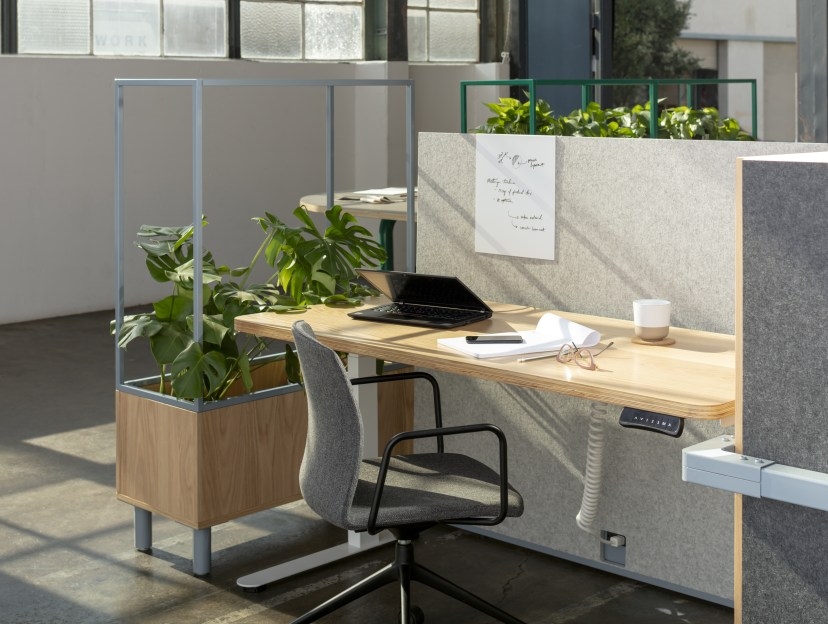
The days of walking into an office building and directly to one’s personal office, desk, or, most commonly, cubicle seem to be over for employees in many companies. Schump says people’s experience of finding space to work wherever they could during the pandemic has led them to be more creative about what can count as a place to take a meeting, respond to email, or draft a presentation. “Coming back to the office, I think there’s more of a willingness to at least experiment with that kind of mobility for a broader range of folks,” he says.
That has led many designers and office furniture makers to broaden the types of desks, chairs, seating, meeting spaces, and collaboration areas they offer. This trend was on full display at NeoCon 2023, the major commercial and interior design conference hosted in Chicago every June. “The pandemic accelerated workplace-design innovation and brought the future of work into full view,” says Byron Morton, vice president and co-head of leasing at The Mart, which hosts NeoCon. “Manufacturers are specifically addressing the challenges of providing a workplace that encourages in-person collaboration in the office while successfully including hybrid workers in meetings and activities.”
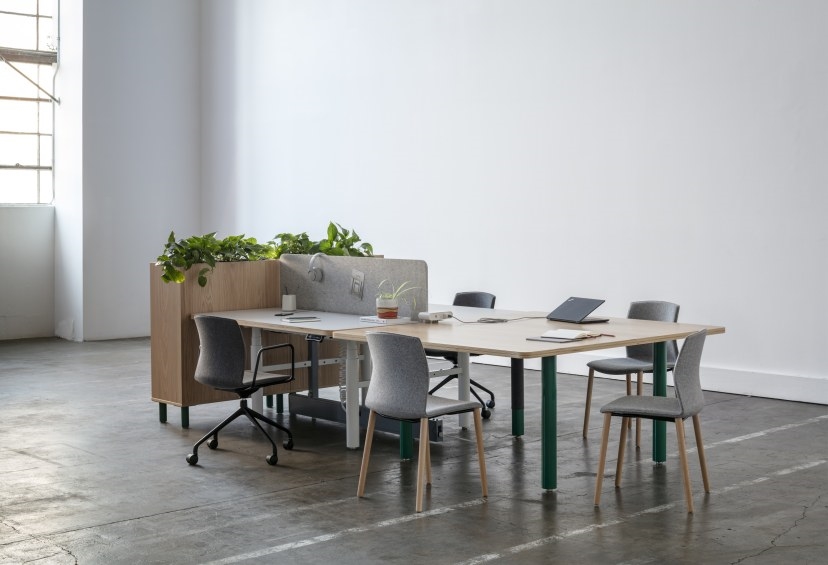
One design solution is Gradient, a workstation system from office furniture maker Pair and product design consultant Gensler. Its modular design uses a basic frame system to hold adjustable-height desks, tables, dividing-wall panels, and storage cabinets. This kit of parts can be combined in a wide variety of layouts, with a cubicle desk sitting alongside a collaboration table or diner-like booth at the end of an L-shaped line of library-style reading desks.
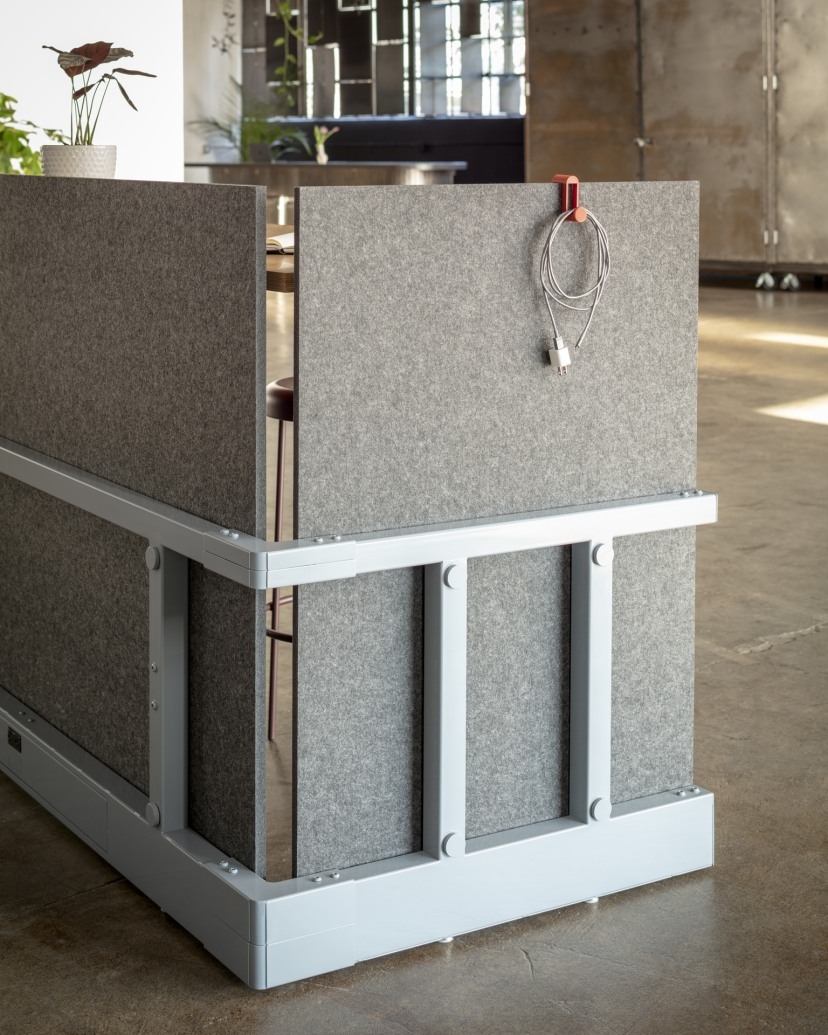
“Systems furniture always promised to be flexible and adaptable and change with you as a company. It very rarely ever was,” says Schump, who worked on the Gradient project. Those systems were difficult to reconfigure without a team of workers, and often required a significant amount of storage space for extra parts if walls needed to come down or shelves needed to go up. Gradient was designed to use as few types of parts as possible, accommodate a range of behaviors, and not require a warehouse for storage, or a team of installers to make a change.
“It can be a box if that’s what you need. It can be straight, individual desk benching,” says Kelly Dubisar, design director and principal at Gensler. “The beauty is, as designers and clients, you can take the footprint of the product and you can start to turn it, you can start to take out a desk and insert a collaborative table.”
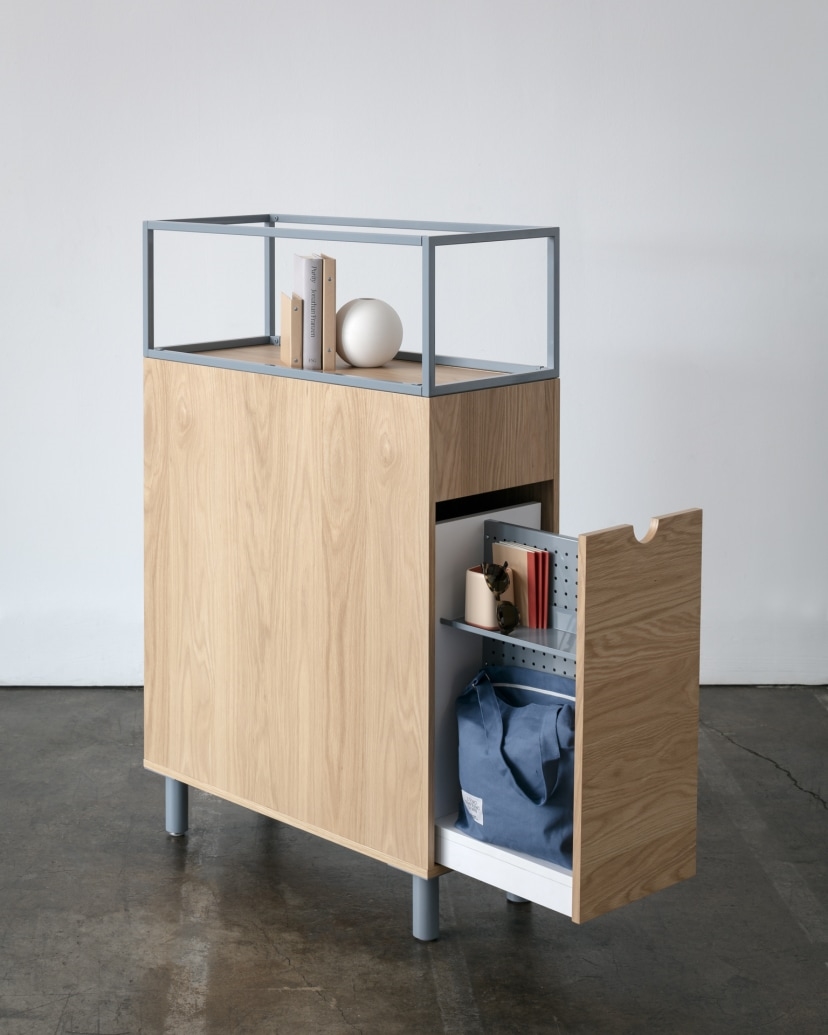
The system’s flexibility derives from its modular-framing system, which is mostly visible. “A lot of systems out there have internal components that come together and then skins and sheet-metal pieces that all hook and hang and clad,” says Pair’s design engineering manager, Eliot Whalen. “Our approach to it was to celebrate the internal workings of the frame and the support system and make that a design element, in a way. Not being afraid to show the frame exposed in the open environment.”
The other parts simply attach onto the frame, whether dividing screens, wall panels, shared storage cabinets, or tables and work surfaces at varying heights. “The landscape can really start to become much more interesting and varied across an open office,” Dubisar says.
Pair is seeing this concept catch on across a range of industries. Clients for the Gradient system so far run from banks to bioscience to education to tech companies. The materials and finishes of the component parts can be customized, dialing down the color for a more buttoned-up bank, or adding a brighter mix of panel finishes for a tech company. “That’s incredibly interesting from an aesthetics standpoint,” Dubisar says.
And if a company’s aesthetic changes, or its workers need a new kind of office configuration, Gradient is designed to easily adapt. “What you might think of today as your open-office configuration can morph and adjust over time,” says Dubisar. “As your business needs change and your employee base starts to work differently, you don’t have to throw everything out. It can work with you and grow with you.”
The cubicle goes high design
Other cubicle-like designs are also applying the lessons learned during the pandemic. Form Us With Love, a Stockholm-based design firm, created a workstation system for Danish furniture maker Plus Halle that is office agnostic.
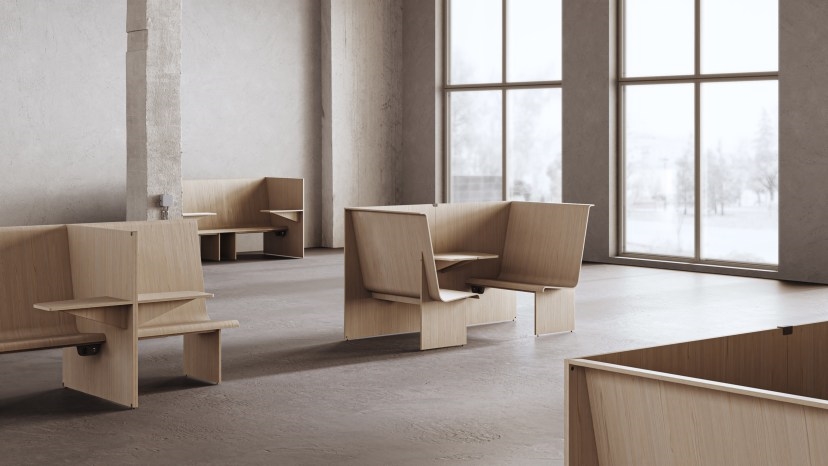
Understanding that work often happens on the go or in interstitial spaces like hotel lobbies or train-station waiting areas, Form Us With Love created a simple pressed-plywood bench, tabletop, and wall system that can be combined in various formations. Looking a bit like a seat and compact table one might find in a fast food restaurant, the workstation—named Cubicle—is a building block for creating individual workstations, cross-table meeting booths, or rows of spaces where someone might spend 10 minutes on a phone call or an hour responding to email.
Form Us With Love cofounder Jonas Pettersson says the Cubicle system is intended to inject working spaces into the non-office places people often find themselves needing to get a bit of work done or have an informal meeting, like a hotel lobby or the entrance of a company headquarters. “Everyone is looking for the space where people can naturally meet or sit down for a phone meeting,” he says.
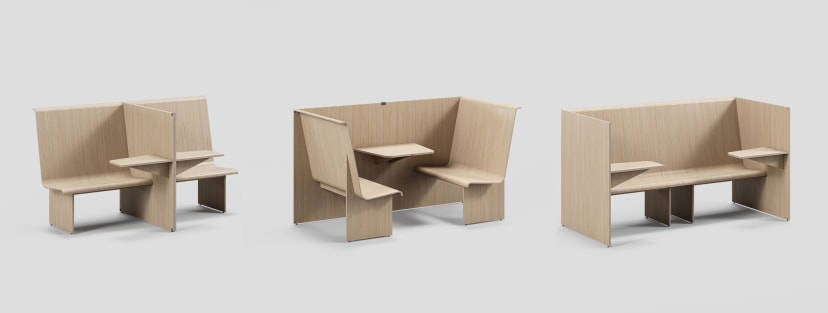
Flexibility was a key design goal, according to John Löfgren, the firm’s other cofounder. Thinking about the post-pandemic work environment, he says the design developed as a counterpoint to the rigid offices that many people were either forced to leave or uninterested in returning to. And while the design takes Cubicle as its name, the workstation isn’t intended to ape the walls and seclusion of the classic cube.
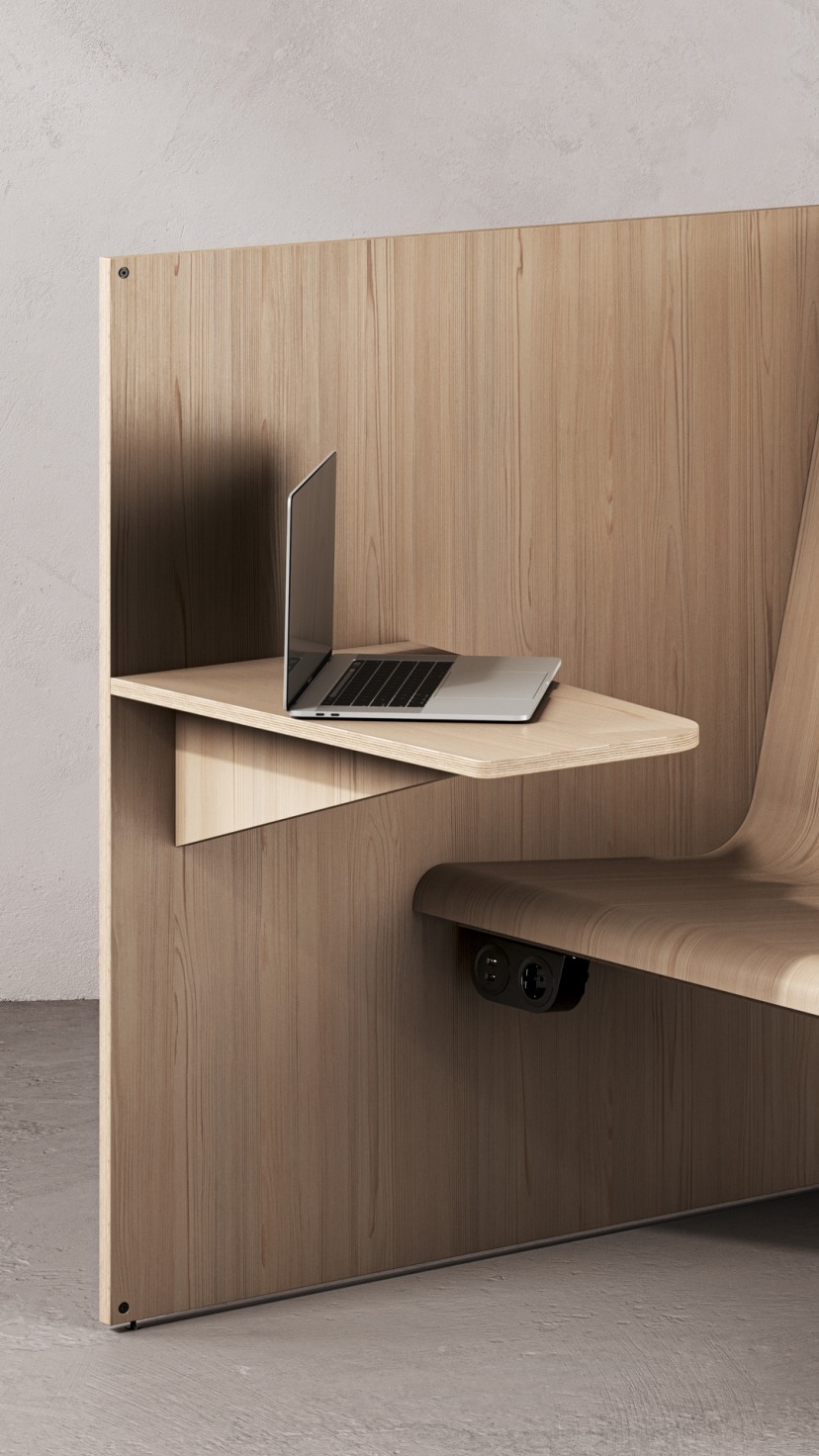
“We discussed a lot how high things should feel. I’m in a secluded environment, but I’m definitely not enclosed,” Löfgren says. “It was kind of a hybrid. Something that had benchlike properties and definitely no doors.”
For all the informal work spaces these new types of cubicles are designed to function within, sometimes workstations still need to be in a sorta boring, sorta unappealing, actual old-school office. That doesn’t mean they have to be bad, though.
The office furniture maker KI worked closely with Facebook parent company Meta during the late pandemic to develop a new kind of workstation. With an expectation that workers would eventually be called on to come back and work in the office on a full-time basis, the company wanted a design that would be appealing to its employees while also accounting for the new hybrid physical-digital ways people work.
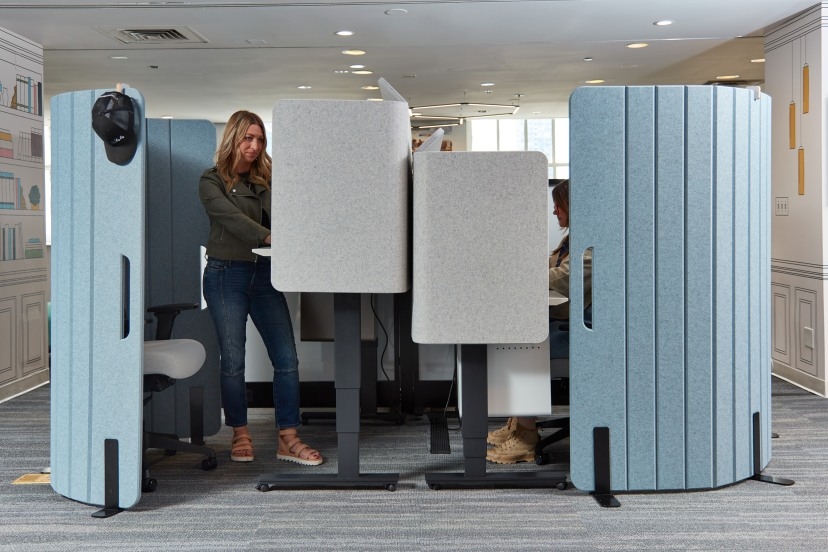
Jonathan Webb is KI’s director of workplace, and he says the goals of the project for Meta boiled down to two very pandemic-related requirements: the workstation had to be a good place to do a video call, and it had to block the noise of an office full of people doing video calls.
“Those are the conversations we’re having every day with all sorts of clients all around the country. It’s how do we improve and enhance the video conference experience, and how do we deal with acoustics,” Webb says.
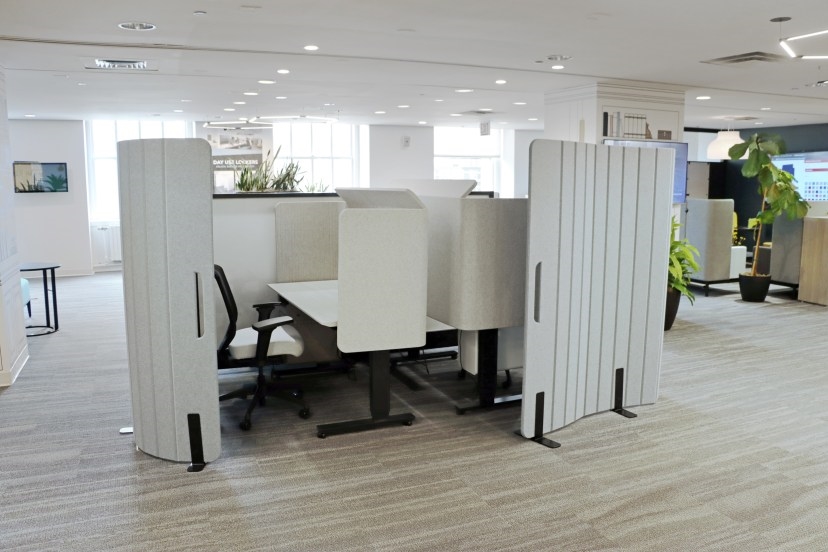
The Meta project—named Cubes—consists of a series of moveable and bendable felt-like wall panels, each capable of providing a noise-blocking barrier or a subtle background screen for those on camera. Meta is technically the designer of the project, and KI is the manufacturer of what it considers a co-creation. Webb says internal testing showed the panels reduced noise by 24 decibels. That’s like turning an alarm clock noise down to the level of a normal conversation, or a normal conversation down to a speechless library. “That’s a considerable reduction in noise movement from one area to another,” he says.
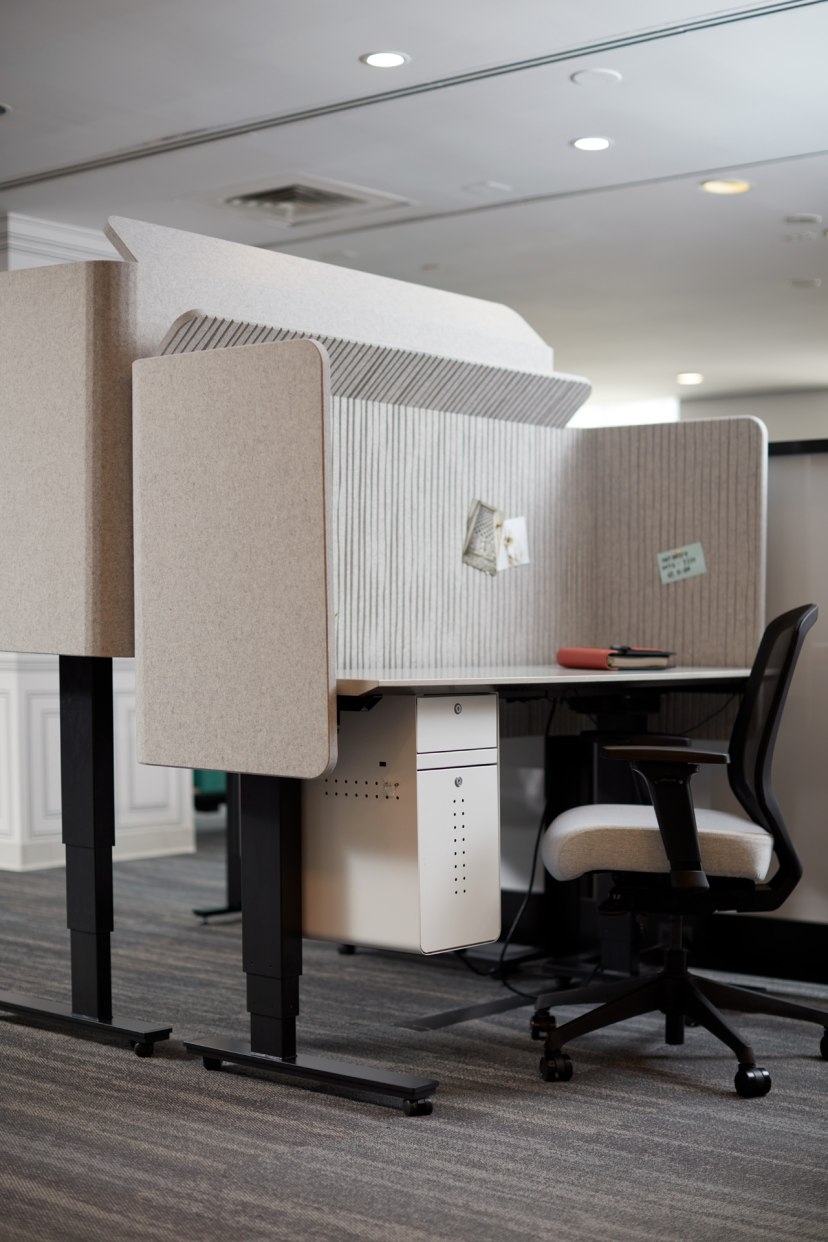
Webb says KI is currently doing market research on the viability of a Cubes-like spinoff project, and says about a fifth of what the company sells is its own take on projects it has co-designed with other companies like Meta. KI is a few months away from knowing if it will produce its own line of screens and panels with similar noise reduction and video-call capabilities to Meta’s Cubes, but Webb says those conditions are increasingly part of the day-to-day work of people in offices. Noise-reducing video screens seem like office features that aren’t going away any time soon. “Meta really helped inform how we think about the workplace in general these days,” Webb says.
The future of the cubicle
The workplace these days is, in a lot of ways, not so different from the ones Herman Miller’s Robert Propst was trying to fix when he helped create the cubicle. As in the 1960s, office workers are contending with new technologies and trying to strike a balance between the work that calls for the efficiency of machines and the work that requires the ingenuity of collaborative human brainpower.
Designing a physical armature to enable both to function is an ongoing challenge. “You’ll see in the next year, the new products that we bring to market are really going to be designed to enhance the work and group work experiences, tied in with technology, within physical office space,” says KI’s Webb. That will likely include spaces optimized for video calls, but also furniture and workstations that can better bend themselves around the changing modes and locations of work.
With the expectations of a 9-to-5, Monday-Friday office life upended by the pandemic, the workstations of today and the near future are ditching the monotony of cubicles past. New office furniture won’t take for granted that workers need to be in the office to get things done.
Even the designers of these new cubicles are embracing these ideas in their own workspaces. Gensler’s Dubisar, who worked on the adaptable Gradient project for Pair, says her office is adopting that system for its own redesign. The flexibility of the system, and its adaptable structural base, made it able to create the kind of space Dubisar’s team needed. She says it was like a hack of the workplace. The team wanted two tables with different heights to sit next to each other and feel like a communal product, “not like two things just shoved next to each other,” she says. “There was a thing that we wanted that didn’t exist, so we made it happen.”
(42)

